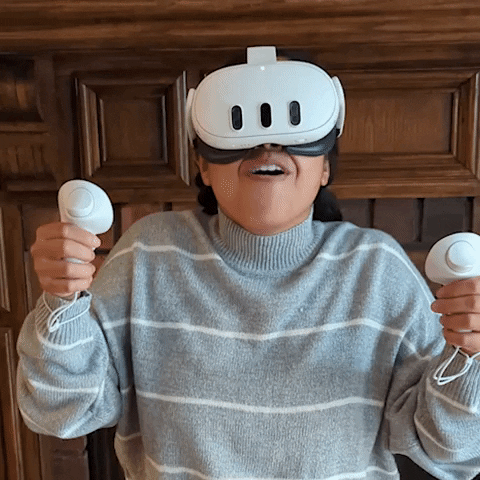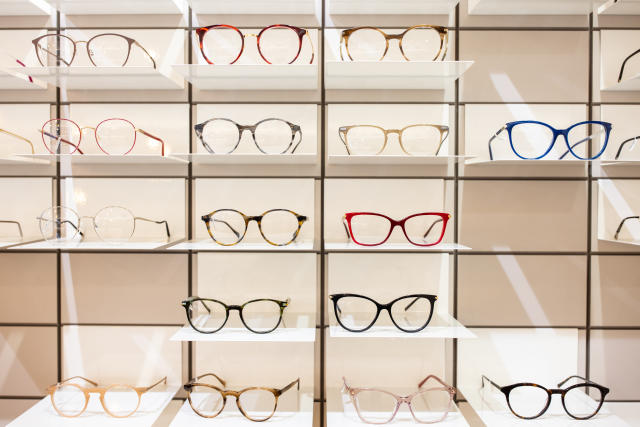
Information About 3D Glasses Technology
Introduction
In recent years, the cinema experience has undergone a significant evolution thanks to technology. In particular, 3D (three-dimensional) cinema offers viewers an immersive experience, almost making them feel as if they are inside the events of the film. One of the most important components of this technology is 3D cinema glasses. 3D glasses help viewers perceive visual effects, depth, and the three-dimensional world. In this article, we will examine in detail how 3D cinema glasses work, their types, advantages, and applications.
3D Cinema Technology and Operating Principle
3D cinema technology works by presenting two different perspectives of the same scene to the viewer, creating a sense of depth. The human eye combines the different images received by each eye from different angles to create the perception of depth. The 3D systems used in cinemas generally operate with one of two main techniques: Anaglyph and Polarized.
- Anaglyph Technology: In the anaglyph technology, two different colors (usually red and blue) are used. The images on the screen are encoded in two different colors that can be distinguished by the viewer. 3D glasses allow each eye to focus on only one color filter, creating the depth perception.
- Polarized Technology: The polarized system uses two separate polarized filters placed on the screen. One filter is polarized horizontally, and the other is polarized vertically. This technology ensures that each eye sees a different light wavelength, allowing for sharper and more natural 3D effects. Polarized glasses are generally preferred for a more comfortable experience with no distortion of colors.
- Active 3D Technology: In this system, the glasses actively synchronize with the rapidly changing frames on the screen. Active 3D glasses briefly open and close in sync with the screen’s frames, ensuring that each eye only receives the correct image. These glasses are commonly used in high-quality 3D content cinemas.

Types of 3D Glasses
3D cinema glasses can vary depending on the technology used and the type of cinema hall. Here are the main types of 3D glasses:
1. Anaglyph Glasses
These glasses were commonly used for older 3D films. They utilize red and blue filters to create depth by encoding two different color channels. However, they are less popular today as they tend to distort colors and are not suitable for modern films.
2. Polarized Glasses
These are the most commonly used type of glasses in cinema halls. Usually made from plastic, polarized glasses contain horizontal and vertical polarized filters. They ensure that colors are represented accurately and are typically lighter and more comfortable to wear.
3. Active 3D Glasses
Active glasses are synchronized with the screen’s content. The frames on the screen alternate rapidly, and the active glasses open and close in coordination with the screen’s signals, allowing each eye to see only the correct image. These glasses are generally more expensive and come with batteries. They are most commonly used in 3D televisions and cinemas.
4. Passive 3D Glasses
Unlike active glasses, passive 3D glasses do not require batteries or electrical power. They typically rely on polarized filters and are lighter and cheaper than active glasses. These glasses are commonly used in IMAX theaters or large-screen cinemas.

Advantages of 3D Glasses
- Immersive Visual Experience: 3D glasses provide viewers with a more realistic and engaging cinema experience. The depth and three-dimensional effects allow viewers to interact more with the movie.
- Advanced Cinema Technology: 3D glasses are one of the most advanced technologies used in modern cinema halls. Polarized and active 3D glasses offer high-quality visual representation with sharp details and colors.
- More Entertainment: 3D films make visual effects more captivating and fun. Particularly in action, animation, and science fiction movies, 3D effects enhance the dynamism and excitement of the viewing experience.
Disadvantages of 3D Glasses
- Comfort Issues: Active 3D glasses can be heavy and cause discomfort, such as headaches or eye strain, when worn for long periods. Additionally, the lenses need to be properly aligned for the viewer to see the 3D effects clearly.
- Price: Active 3D glasses tend to be more expensive due to the technology and batteries used in them. Furthermore, some cinema halls may only support specific types of glasses, requiring viewers to buy or rent them.
- Image Quality: Some 3D glasses may cause color distortion and reduce screen brightness. This may vary depending on the quality of the glasses.
Applications of 3D Glasses
- Cinema Halls: The most common application of 3D glasses is in cinema halls. Large screens and high-quality 3D films provide viewers with an immersive experience.
- Home Cinema Systems: 3D televisions and projectors, paired with 3D glasses, offer a similar experience for home viewers. This technology is especially popular among those who want to enjoy 3D movies at home.
- Video Games: 3D glasses can also be used with compatible video games. 3D games offer a dynamic and realistic gaming experience for players.
- Medical and Educational Fields: 3D glasses are used in educational and medical imaging applications. For example, surgeons can perform pre-surgical simulations using 3D imagery, and students can engage with interactive 3D content for educational purposes.

Conclusion
3D cinema glasses are an essential component of modern cinema technology. Used in both the entertainment sector and scientific and educational fields, these glasses offer viewers depth perception and an immersive experience. With the advancement of technology, the comfort, quality, and applications of 3D glasses continue to expand. Viewers can step into a whole new cinematic world with 3D glasses, whether in a cinema hall or at home, enjoying a previously unseen visual experience.



